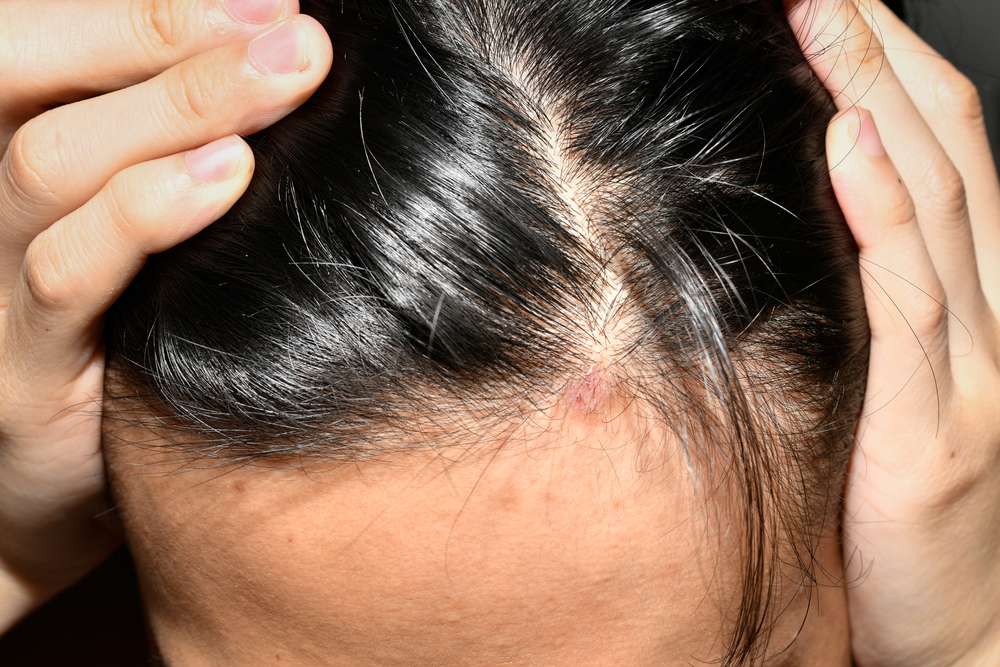Folliculitis: The Silent Saboteur of Healthy Hair
Folliculitis, a common yet often overlooked skin condition, affects millions of people worldwide. This inflammatory disorder targets hair follicles, causing discomfort, unsightly bumps, and potential hair loss. While it can occur anywhere on the body where hair grows, folliculitis frequently appears on the scalp, face, and neck, making it a significant concern for those seeking healthy hair and clear skin. Despite its prevalence, many individuals remain unaware of its causes, symptoms, and treatment options. Understanding folliculitis is crucial for maintaining optimal skin and hair health, as well as preventing long-term complications that can arise from untreated cases.

Recognizing the Signs
Identifying folliculitis early is key to preventing its spread and minimizing its impact on hair health. The condition typically manifests as small, red, and sometimes itchy bumps around hair follicles. These bumps may be filled with pus and can resemble acne. In more severe cases, the affected areas may become painful and develop into larger, more inflamed lesions. On the scalp, folliculitis can lead to areas of hair thinning or temporary baldness if left untreated. It’s important to note that while folliculitis can occur in anyone, individuals with curly hair or those who frequently wear tight hairstyles are at higher risk due to the increased likelihood of ingrown hairs.
The Impact on Hair Health
Folliculitis can have significant consequences for hair health if not properly managed. Chronic inflammation of the hair follicles can lead to scarring, which may permanently damage the follicles and prevent hair regrowth. This is particularly concerning for individuals experiencing folliculitis on the scalp, as it can result in patchy hair loss or even permanent baldness in severe cases. Additionally, the discomfort and visible symptoms of folliculitis can lead to a cycle of scratching and further irritation, exacerbating the condition and potentially introducing secondary infections.
Treatment Approaches
Addressing folliculitis requires a multi-faceted approach tailored to the severity and underlying cause of the condition. For mild cases, over-the-counter topical antibiotics or antifungal creams may be sufficient to clear the infection. However, more persistent or severe cases often necessitate prescription-strength medications. Oral antibiotics may be prescribed for widespread or deep-seated infections, while antifungal medications are used when fungi are the underlying cause. In addition to medication, lifestyle changes play a crucial role in managing folliculitis. These include maintaining good hygiene, avoiding tight clothing in affected areas, and using gentle, non-irritating hair care products.
Prevention Strategies
Preventing folliculitis is often easier than treating it, and several strategies can help minimize the risk of developing this condition. Regular cleansing with antibacterial soap can help keep bacteria populations in check, particularly in areas prone to sweating. For those who shave, using clean, sharp razors and shaving in the direction of hair growth can reduce irritation and the likelihood of ingrown hairs. Avoiding tight clothing, especially in hot and humid conditions, can also help prevent folliculitis by reducing friction and moisture trapped against the skin. For individuals prone to recurrent folliculitis, using medicated shampoos or body washes containing ingredients like tea tree oil or benzoyl peroxide can provide additional protection against bacterial overgrowth.
The Role of Diet and Lifestyle
While often overlooked, diet and lifestyle factors can play a significant role in managing folliculitis and promoting overall skin and hair health. A balanced diet rich in vitamins A, C, and E, as well as zinc and omega-3 fatty acids, can help support the immune system and reduce inflammation. Staying hydrated is also crucial for maintaining healthy skin and hair follicles. Stress management is another important factor, as chronic stress can weaken the immune system and make the body more susceptible to infections. Regular exercise, while beneficial for overall health, should be accompanied by proper hygiene practices to prevent sweat-induced folliculitis.
Emerging Treatments and Research
As our understanding of folliculitis evolves, new treatment options are emerging that offer hope for those struggling with persistent cases. Laser hair removal has shown promise in reducing folliculitis in some individuals by eliminating the hair follicles that are prone to infection. Additionally, research into the skin microbiome is opening up new avenues for treatment, with probiotics and prebiotics being explored as potential ways to balance the skin’s bacterial ecosystem and prevent overgrowth of harmful bacteria. Some studies are also investigating the use of photodynamic therapy, which uses light-activated compounds to target and destroy bacteria within hair follicles.
When to Seek Professional Help
While mild cases of folliculitis often resolve on their own or with over-the-counter treatments, it’s important to know when to consult a dermatologist. Persistent or recurring folliculitis, especially if accompanied by fever, spreading redness, or increasing pain, warrants professional evaluation. A dermatologist can provide a definitive diagnosis, rule out other skin conditions that may mimic folliculitis, and prescribe more aggressive treatments if needed. They can also offer guidance on managing underlying conditions that may contribute to recurrent folliculitis, such as diabetes or immune disorders.
In conclusion, folliculitis, though often underestimated, can have significant implications for both skin and hair health. By understanding its causes, recognizing its symptoms, and implementing effective prevention and treatment strategies, individuals can protect their hair follicles and maintain healthy, vibrant hair. As research continues to advance our understanding of this condition, new and more targeted treatments offer hope for those struggling with persistent folliculitis. With proper care and attention, the silent saboteur of healthy hair can be effectively managed, allowing individuals to enjoy clear skin and thriving hair growth.




